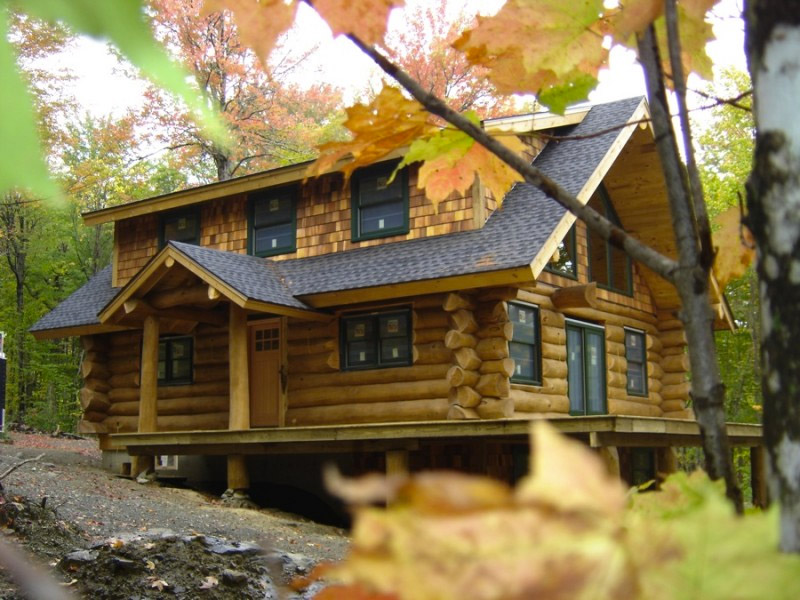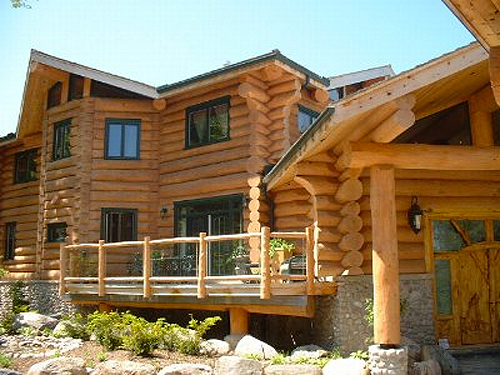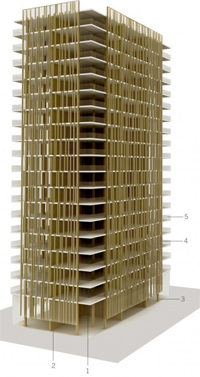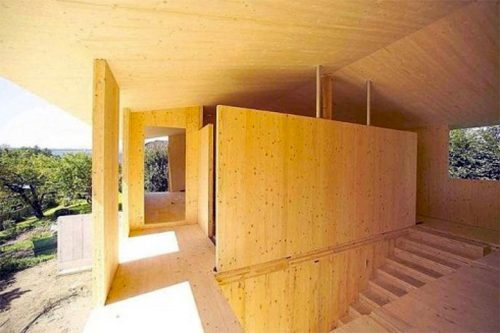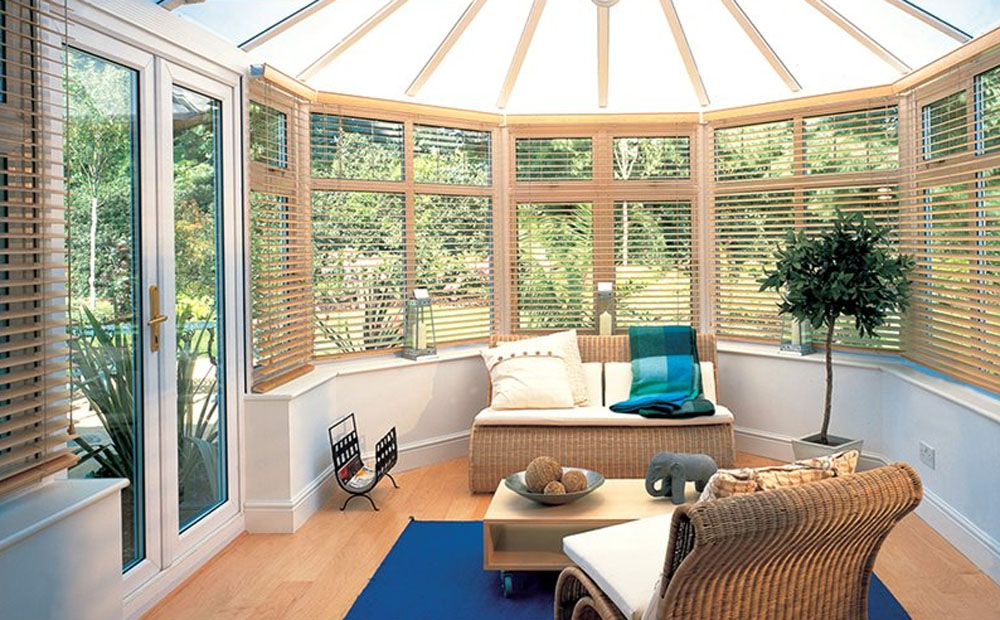The natural beauty and character of Eastern White Pine logs is so striking, sometimes it just needs to take center stage. That’s certainly the case when it comes to log homes, which put all of the architectural focus on the simplicity and charm of raw wood, resulting in a home that feels like it’s a part of the forest.
One example is this 1700-square-foot residence on Brassua Lake in Maine, designed and built by Grandview Log & Timber Frames. Set at the water’s edge, surrounded by trees, the home seems like a natural fit in its environment, the logs giving it a sense of weight and timelessness.
Full-round log homes use thick, smoothed-down logs stacked together with notched ends. Careful shaping as well as the weight of the wood create solid, well-sealed walls that don’t require any sort of mortar.
The striking simplicity of these structures, best seen when they’re still under construction and consist of nothing but the log frame itself, has been prized for century after century. See more Eastern White Pine log homes at GrandviewTimbers.com.

